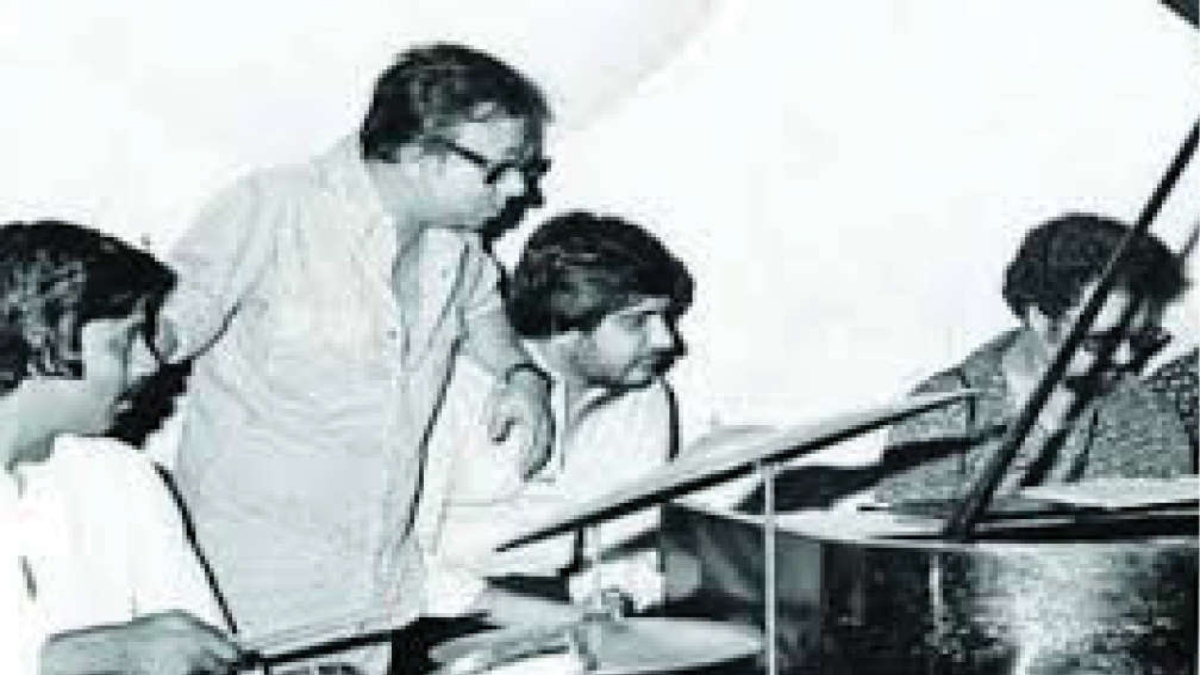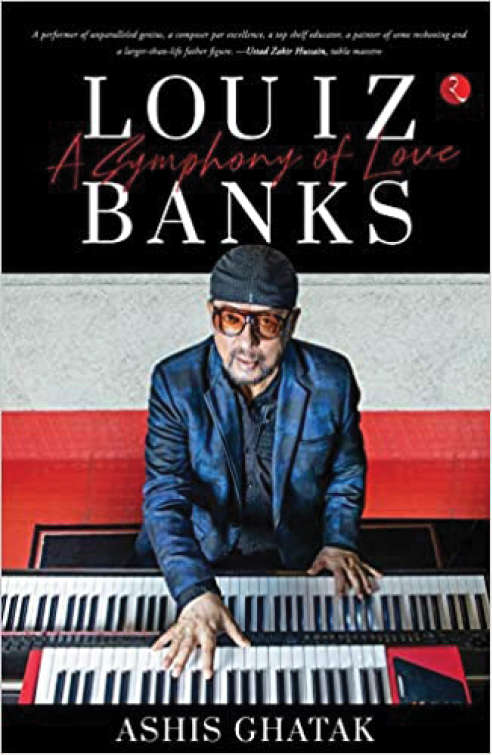
From the comfort of Blue Fox in Calcutta, to the country’s commercial capital by the Arabian Sea, the journey was a huge leap into the unknown. Bombay was a much bigger city and leaving a steady job overnight always carries a certain sense of insecurity. Louiz was lucky in two aspects. First, Ganga, his sister, had a rented flat in Nirmala Colony, Bombay where he could put up. And second, there was R.D. Burman’s assurance that the doors of his studio would always be open for him. However, the sudden closure of a life of contentment in Calcutta marked for Louiz a fresh beginning to something promising. Unlike most beginners, it was not a tale of an incognito struggling to get a toehold there. Just a day after he moved to Bombay, he landed straight in the recording room of Film Centre. The scopes and premises of music-making in Bombay differed vastly from what it was in Park Street. Louiz had had just a week’s experience when he had come there a year before, but at the time he had no clue he would be resuming his career there so soon.

Louiz had hardly any idea of the mammoth dimension of Hindi films and film music in the psyche of average Indians. One wonders whether cinema is an extension of Indian psyche or the other way round. Every average Indian has felt, at a certain point in their adolescent years, that they would like to be part of the dreams ferried in celluloid. They glorify the struggle that they see in their heroes of the screen and pass away their youth in vicarious wish-fulfilment. The victory of the hero over all odds assumes such a pyrrhic proportion to the countless fans that they can afford to smile even in the direst inadequacies of life.
So deep and probing is the reach of Hindi films in the sensibility of youth, that Bombay itself seems to be the gateway of dreams for the legions. Music is, in fact, the bedrock of Hindi films. There are thousands of technicians, like tunesmiths, whose works get relayed from one hand to the other. Finally, they take the shape of a glittering music piece. Hindi films are eloquent not just with dialogues but also with songs. So, when a wayward youth jostles through the screaming, vulgar train passengers on his way back home, a Kishore Kumar song keeps him absorbed in his own world. Or when an adolescent eyes his lady love while walking under her balcony, he sings another tune. Happiness in the family is ushered in with a song, a beggar sings out the pangs of his life, friends swear their companionship with a song, a loner rambles fostering a song in his heart and a song begins to float when hope resurfaces. Film songs are like the essential breath, the ultimate raconteur of dreams and despair, an identity of Indianness and a parallel lifeline of one’s being.
From the auspices of jazz music into this elaborate paraphernalia of music-making in the Hindi film industry, it was a massive paradigm shift for Louiz. The hysteria and frenzy associated with Hindi film songs can never be matched with any other genre of music. The process of music-making was elaborate. The songs were meant for the billions. On the contrary, jazz was always the music of the elite, food for the reflective and knowledgeable. It was primarily live improvised music, a marked departure from the recorded music of Hindi film songs. While jazz music is born on stage, recorded music is the finished product of many brains working together and the culmination of a lengthy procedure. Jazz is open to impromptu music, whereas Hindi film songs are a straitjacketed field of notes and bars—every single note is too sacrosanct for musicians to take any liberty. While jazz is the combined effort of primarily four or five minds, Hindi film music is the combination of hundreds where a pianist is just a small cog of a vast wheel. So, when Louiz chose to leave the seat of the bandleader and fit himself in one of the hundreds of musicians, it was undoubtedly a metamorphosis of his career. Taking a leave from the cloistered music circle, he jumped into the bandwagon of popular music. He welcomed another change in his life, a change of which he was not certain.
Jazz musicians were lucrative properties among the music directors for they could write and understand staff notations. Hindi movies had offered the scope for earning their bread and butter to quite a few jazz players. Jazz had not exactly been a domain known for minting money. Louiz followed the illustrious footsteps of the legendary jazz trumpeter Chic Chocolate who was a nightclub music performer and had been inducted to the Hindi film industry. Chic Chocolate, introduced by music director C. Ramchandra in Hindi film songs, was hailed to be one of the pioneers of bringing elements of jazz to Bollywood songs. Many other jazz musicians had since had sporadic stints in Hindi film industry. Louiz’s connection with Hindi films turned out to be an abiding one, and one that would cover a significant phase of his life.
Hindi film songs are woven out of interconnected notes in a well-thought-out pattern conceived by music directors and their arrangers. Individual players hardly have any freedom in that preconceived pattern. Moreover, a jazz standard runs for any length of time, whereas, the span of a film song barely crosses a duration of five to six minutes until, somewhat of a maverick and genius, R.D. Burman broke all the barriers. Like an iconoclast, he set his own parameters and definition of music-making in Hindi films. He not only composed songs of unusually longer lengths, but he was also instrumental in bringing many changes to the traditional concepts of Hindi film music. Other composers at the time were pretty complacent and did not cross beyond the known peripheries in order to pander to the popular taste. But Burman was ever experimental and set new dimensions in music for listeners. For him, music-making was an extension of his own aesthetics. He was more of an apostate, a free-thinking spirit looking to set new grounds for the future. From the innovative use of western instruments to various experimentations with sound, only R.D. Burman could break the set parameters with his free-thinking spirit and zest to explore the unknown. R.D was a jazz enthusiast. Introduced to this genre of music by his friend and musician Kersi Lord, he was largely influenced by the jazz greats and had tried to experiment with the tenets of jazz in his compositions. His team of musicians were key to implementing these experimental thoughts and ideas. When he had listened to Louiz’s music in Blue Fox, he had spotted a quintessential member in his armoury. There were pianists galore in the Bombay film industry but Burman had discovered a rare spark in the talent of Louiz. He could foresee an untapped potential in the young man’s piano-playing. The feel, the technique of playing chords and the instinct to sound different from the rest marked Louiz apart. On top of this, his jazz background helped him play in a manner which had never been witnessed before in anyone else’s technique. It was no wonder when Burman welcomed him the day Louiz decided to close the Calcutta chapter of his life. For Louiz, as he always believed himself to be one of the choicest recipients of divine intervention, it was another beginning. He found his ‘godfather’, R.D. Burman.
Excerpt from the book ‘Louiz Banks: A Symphony of Love’ (published by Rupa Publications)